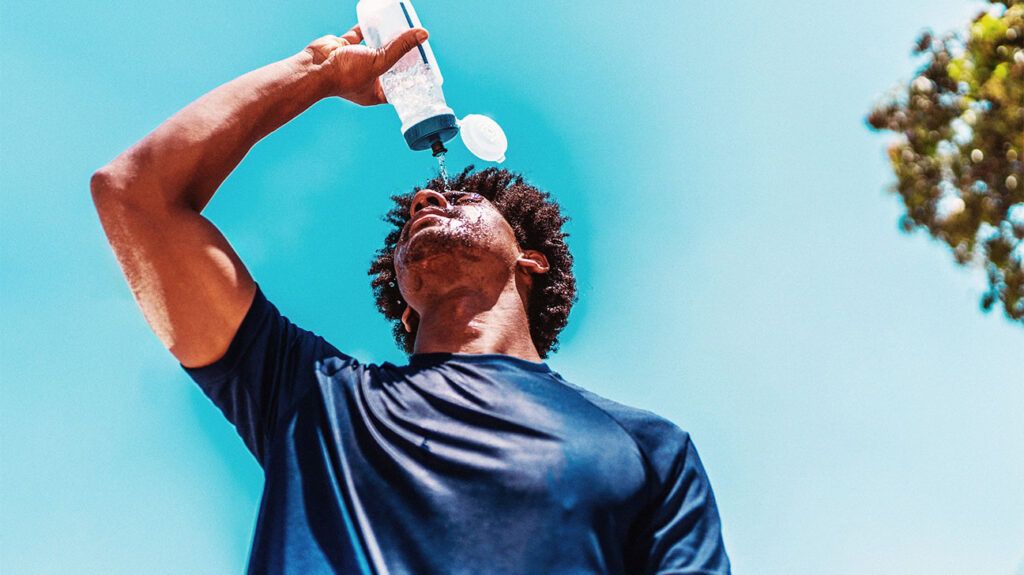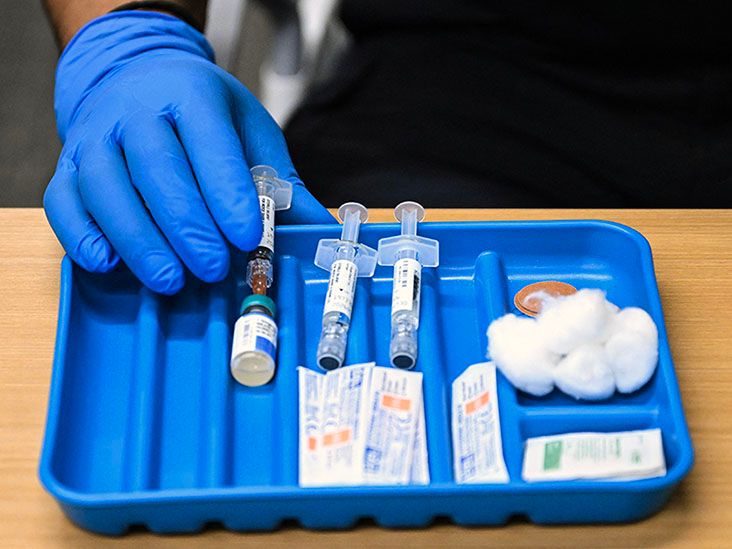Hyperthermia is a spectrum of heat-related illnesses. This group of conditions involves an abnormally high body temperature of more than 104°F (40°C). It is the opposite of hypothermia.
Hyperthermia, or heat-related illness, occurs when the body’s heat-regulation system becomes overwhelmed by outside factors, causing a person’s internal temperature to rise.
Hyperthermia is considered separate from conditions where internal body sources — such as infection, heat-regulating problems, and adverse drug reactions or overdoses — cause a raised body temperature.

Normal core body temperatures range from
During strenuous exercise, it can be typical for a person’s temperature to temporarily rise as high as 104°F. However, experts classify a consistent core body temperature
Hyperthermia is not a condition in itself but refers to a spectrum of heat-related illnesses. These conditions
- heatstroke
- heat exhaustion
- heat edema, which is heat-related swelling
- heat syncope, or heat-related fainting
- heat-associated cramping
The symptoms of hyperthermia depend on the stage it has reached or how much the body has overheated. Symptoms of overheating may develop very quickly or over hours or days.
As the body attempts to cool itself by sweating, the sweat takes with it water and crucial salts called electrolytes. This causes dehydration.
Mild dehydration tends to have minor symptoms, such as headache and muscle cramps.
Severe dehydration, however, can strip the body of its ability to cool. Without treatment, this can result in dangerously high body temperatures and life threatening conditions, including organ failure and death.
This section details the types of hyperthermia, or heat-related illnesses, and their associated symptoms.
Heatstroke
Heatstroke is a dangerous condition that can lead to serious complications. If a person displays signs of heatstroke, they should call 911 immediately.
Signs of heatstroke
If a person suspects someone has heatstroke, they should contact emergency services, move the individual to a cool place, and try to cool them down with a cold cloth or a cool bath. They should not give them anything to drink.
Heat exhaustion
Symptoms of heat exhaustion
- pale, cold, and clammy skin
- a fast, weak pulse
- heavy sweating
- nausea or vomiting
- weakness or tiredness
- muscle cramps
- dizziness
- headache
- fainting
If a person thinks they or someone else may have heat exhaustion, they should move them to a cool place and try to cool them down with a cool bath and a cool cloth. Sipping cool water can also help.
Heat exhaustion, if left untreated, can lead to heatstroke, which is a life threatening condition.
If a person experiences vomiting, symptoms last for over 1 hour, or symptoms turn into heatstroke, they should contact 911.
Heat fatigue and cramps
Intense exercise can cause heat fatigue and heat cramps. Symptoms include heavy sweating during vigorous exercise and muscle pain or spasms.
If a person experiences these, they should stop exercising immediately, move to a cool place, sip water or a sports drink, and wait for the cramps to go away. It is best not to resume exercising.
Learn moreLearn more about hyperthermia and heat-related illnesses.
If someone suspects hyperthermia, they should immediately stop what they are doing and move to a cool, shaded place with good airflow.
A person should seek medical attention for heatstroke symptoms or general symptoms that do not improve within 1 hour of rest and care.
Additional tips for treating mild to moderate hyperthermia
- sipping cool water or an electrolyte drink
- loosening or removing excess clothing
- lying down and trying to relax
- taking a cool bath or shower
- placing a cool, wet cloth on the forehead
- running the wrists under cool water for 60 seconds
- not resuming activity until symptoms have gone away
- placing ice packs or compresses under the arms and groin
- using a fan to cool the skin
If a person suspects heatstroke or symptoms persist, they must call 911 immediately.
Another person will have to help if the individual with heatstroke is unconscious or very disorientated.
Once in the hospital, doctors may give intravenous fluids containing electrolytes and possibly chilled fluids.
Doctors will closely monitor individuals until symptoms resolve and their body temperature returns to a safe level, which can take several hours.
Additional emergency medication and treatment may be necessary for severe or complicated cases of heatstroke, including if organ failure, seizure, or other medical conditions have occurred.
Severe cases of hyperthermia often require several days of hospitalization and monitoring until a person fully recovers.
Hyperthermia occurs when the body cannot release enough heat to maintain a normal temperature, especially during physical activity in warm or humid conditions.
When the environment is hotter or more humid than the body, it becomes difficult for the body to cool down through sweating and blood flow.
This leads to dehydration, loss of electrolytes, and reduced sweating, which can further increase body temperature.
Activities that carry risks for heat-related illness include:
- a marathon or other long-distance running or hiking
- intense physical sports, such as football, soccer, or rugby
- the use of saunas, hot tubs, and steam rooms
- jobs involving heat exposure, such as firefighting or construction work
Though less common, hyperthermia can also take place while someone is resting, especially during extreme heat waves.
Some people are at higher risk of heat-related illnesses,
- infants and young children
- people ages 65 years or older
- people with disabilities
- those who are overweight
- people who work outside or do intense physical work
- people with certain illnesses, especially heart disease or high blood pressure
- those who take certain medications, such as for depression, insomnia, or circulation
Learn moreLearn more about risk factors for hyperthermia and overheating.
To prevent heatstroke and heat-related illnesses, a person
- Stay hydrated: On hot days in particular, a person should drink plenty of water throughout the day, even if they do not feel thirsty. Avoiding alcohol or caffeinated drinks is also a good idea, as they can cause dehydration.
- Wear appropriate clothing: To keep the body cool, it is best to opt for light-colored, lightweight, and loose-fitting clothing.
- Avoid peak heat hours: Limiting outdoor activities during the hottest parts of the day, usually 10 a.m. to 4 p.m., is essential for preventing heat-related illnesses. It is best to take regular breaks and seek shade or air-conditioned areas where possible.
- Use sun protection: When out in the sun, a person should apply sunscreen with at least SPF 30 and wear a wide-brimmed hat and sunglasses to minimize sun exposure.
- Cool down: Using fans, taking cool showers, drinking cold water, or applying cold compresses can help regulate body temperature and prevent overheating.
- Acclimate gradually: If a person is not used to hot weather or intense exercise, they should slowly increase their activity level to allow their body to adjust to the heat.
Hyperthermia refers to a spectrum of heat-related illnesses. Consistent core body temperature above 104°F (40°C) is classed as hyperthermia.
The most serious heat-related illness is heatstroke, which needs immediate medical attention. Symptoms of heatstroke include a temperature of 103°F (39.4ºC) or higher, a fast pulse, nausea, and fainting.
Avoiding peak heat hours, seeking cool environments where possible, not overexerting, and staying hydrated can all help prevent heatstroke and heat-related illness.


